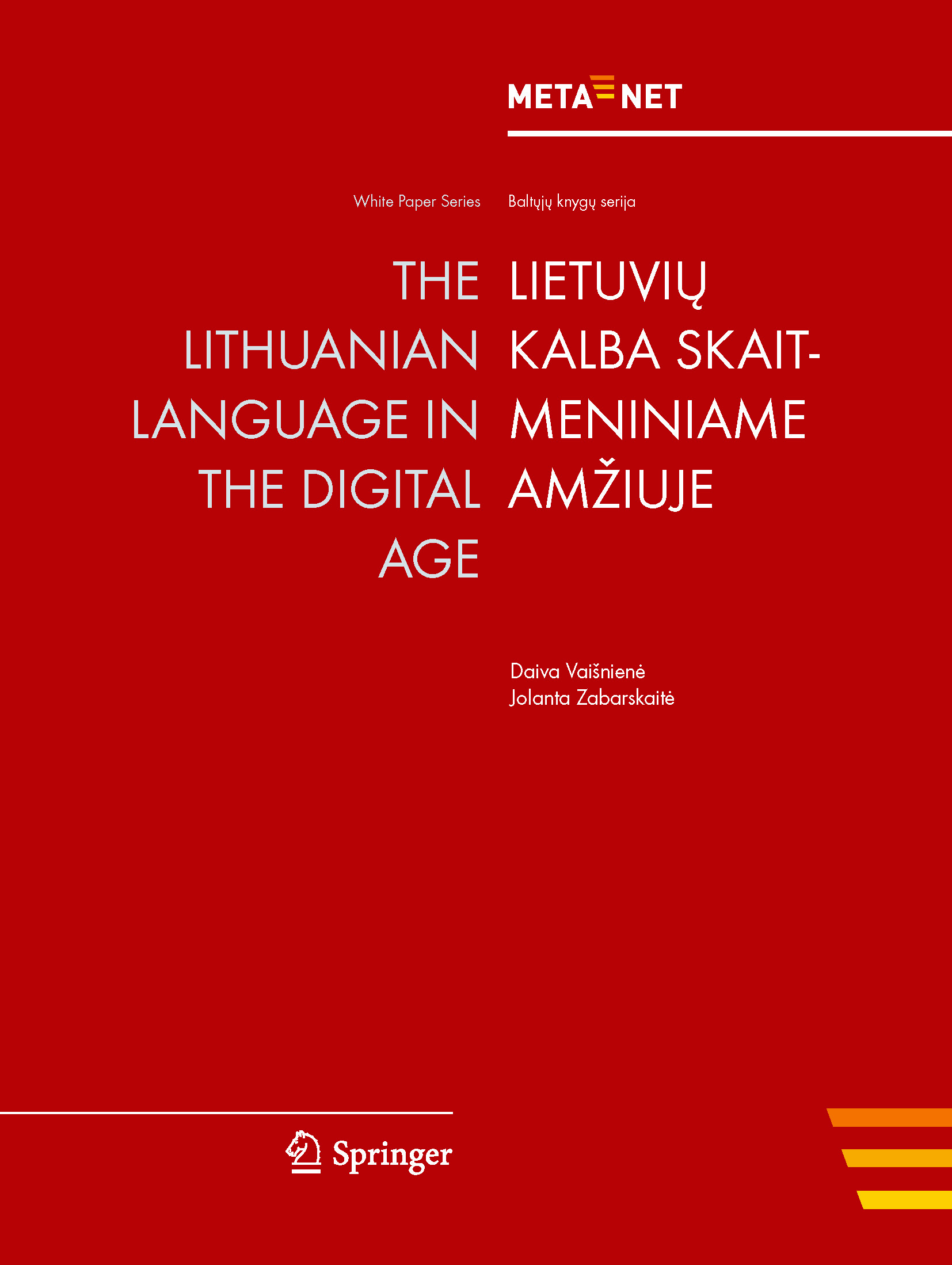The Languages of Lithuania
Lithuanian is the state language of the Republic of Lithuania with 2.67 million native speakers in Lithuania alone; inside the country, the language is also spoken by about 350,000 people of other nationalities. About 0.6 million speakers live abroad, making it a total of 3,6 million speakers. Since 2004, Lithuanian has been one of the official languages of the European Union. The Lithuanian language is still used by Lithuanian national minorities in the south-eastern part of Latvia (mainly Latgale), in the north-eastern part of Poland (Punsk, Sejny and other districts), and in the north-western part of Belarus (Opsa, Gervėčiai, Pelesa, Rodūnia and other districts). The Lithuanian language is also spoken by expat communities in Ireland, Australia, Brazil, Estonia, Spain, the United States, Canada, Kazakhstan, Russia, Ukraine, and elsewhere. The two largest and most distinct Lithuanian dialects are: Aukštaitian and Samogitian.
Features of Lithuanian:
- Among the Indo-European living languages, Lithuanian has best maintained the synthetic sentence structure. Syntactic connections in it are mainly expressed in interrelated forms of words.
- The current Lithuanian alphabet has 32 letters: 12 vowels, 20 consonants and 3 letter combinations.
- In Lithuanian, lexis is the most variable level of language. Some words disappear and new ones are coined. In the current Lithuanian language, there are especially many terms in various fields. The lexis encompases old words, words inherited from the Proto-Indo-European language, word coinages based on inherited words and borrowings.
- At the end of the 19th century and the beginning of the 20th century, the world-famous specialists in Indo-European linguistics, mainly linguists from Germany, Poland, Russia and other countries, became interested in the Lithuanian language due to its archaic structure and vocabulary.
- There were more than 30 institutions for the Lithuanian language studies (sometimes Baltic studies) in various countries (mostly in Europe), where one or several linguists study and/or teach the Lithuanian language (and culture).
NCC Lead Lithuania
Dr. Albina Auksoriūtė is the Director of the Institute of the Lithuanian Language and Senior Researcher at the Centre of Terminology at the Institute of the Lithuanian Language. Her research interests include history of terminology and standardization of contemporary terminology, especially terminology of life sciences. She edits dictionaries, standards of terms and scientific journals. In the last years, she took part in two large-scale international projects: a project of the European Commission “EuroTermBank” and the project “eTranslation TermBank”. She works as an expert in the project “Federated eTranslation Termbank Network“ and is a member of the Management Committee of the COST Action CA19102 “Language In The Human-Machine Era” (LITHME) since 2020. As the President of the International Information Centre for Terminology from 2009-2018 and a Member of the State Commission of the Lithuanian Language, she actively supports the Language Technology community.

Current National Initiatives
- Several LT policy documents and programmes exist in Lithuania. The ”Guidelines for Lithuanian LT Development 2014-2020” was issued by the State Commission of the Lithuanian Language. Its main priorities were R&D for LT, MT, speech analysis, dialogue systems, summarisation, semantic technologies, text analysis, LRs, and others. “The Lithuanian Information Society Development Programme 2014–2020” promoted the Lithuanian culture and language through ICT by creating digital content based on text and speech interfaces, and developing digital products and services. The programme “The Lithuanian Language for Information Society (2014- 2020)” was approved to ensure funding by European Structural funds and the State. In 2020, a new version of the LT policy guidelines was approved: “Guidelines on the Development of the Lithuanian Language in Digital Environment and Advancements in LT (2021-2027)”. And the “Lithuanian Artificial Intelligence Strategy: A Vision of the Future” was issued in 2019
- Until 2020–2021 five projects have developed LT services or resources, including speech, digital public services, machine translation, localisation.
Mokslo ir enciklopedijų leidybos centras. (2020). lietuvių kalba. In Visuotinė lietuvių kalbos enciklopedija. Retrieved 12:00, December 21, 2020, from https://www.vle.lt/straipsnis/lietuviu-kalba/.
Events
| 2020 | |||
|---|---|---|---|
| 2nd Regional ELG Workshop: Baltic Countries |
Regional workshop | Kaunas, Lithuania | September 21 |
META-NET White Paper on Lithuanian
Daiva Vaišnienė and Jolanta Zabarskaitė. Lietuvių kalba skaitmeniniame amžiuje - The Lithuanian Language in the Digital Age. META-NET White Paper Series: Europe's Languages in the Digital Age. Springer, Heidelberg, New York, Dordrecht, London, 9 2012. Georg Rehm and Hans Uszkoreit (series editors).
Full text of this META-NET White Paper (PDF)
Additional information on this META-NET White Paper
Availability of Tools and Resources for Lithuanian (as of 2012)
The following table illustrates the support of the Lithuanian language through speech technologies, machine translation, text analytics and language resources.
| Speech technologies | Excellent
support |
Good
support |
Moderate
support |
Fragmentary
support |
Weak/no
support |
|---|---|---|---|---|---|
| Machine translation | Excellent
support |
Good
support |
Moderate
support |
Fragmentary
support |
Weak/no
support |
| Text analytics | Excellent
support |
Good
support |
Moderate
support |
Fragmentary
support |
Weak/no
support |
| Language resources | Excellent
support |
Good
support |
Moderate
support |
Fragmentary
support |
Weak/no
support |
